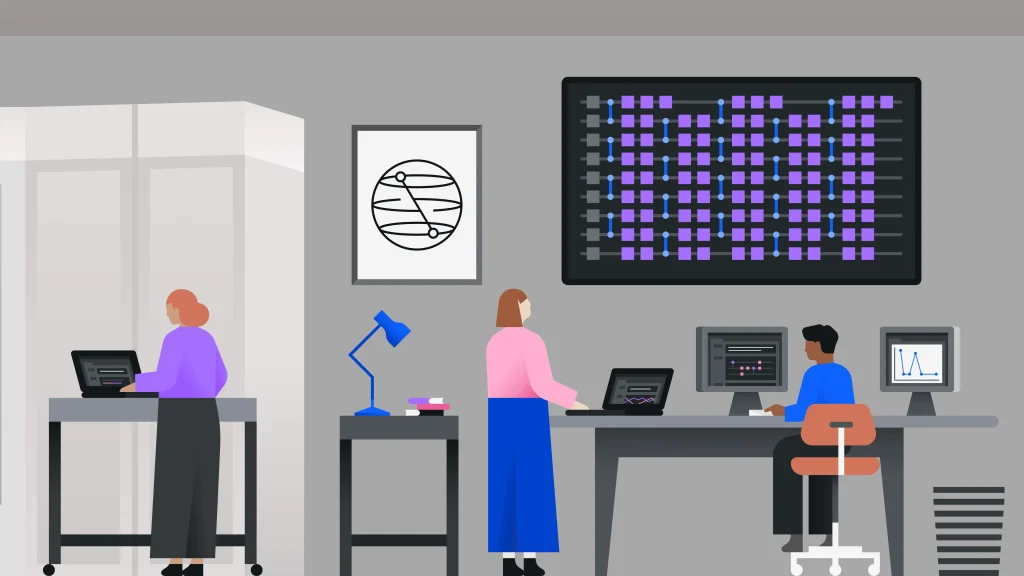Researchers at IBM have established the Quantum Credits program, formally initiated in 2020 as an evolution of the IBM Quantum Researchers Program, to provide access to IBM quantum hardware – currently systems with 127-156 qubits – and software capabilities for utility-scale quantum computing research. The program prioritises proposals demonstrating novelty, feasibility within one year utilising 5-10 hours of compute time, and the potential to surpass classical computational limits, with an emphasis on algorithms leveraging greater than 30 qubits and scalable quantum methods; to date, the initiative has supported the publication of over 160 peer-reviewed papers in journals including Nature, PRX Quantum, and IEEE Transactions, accruing over 3,600 citations. Recent advancements in hardware, including dynamic circuits and the forthcoming Nighthawk processor promising a roughly 16x increase in effective circuit depth, have enabled a landmark quantum utility experiment completed in 80 minutes – an 85x improvement – alongside the implementation of techniques such as fractional gates, dynamic decoupling, and novel algorithms like sample-based quantum diagonalization (SQD). To date, the program has granted over 30,000 quantum compute hours, fostering collaborative research across disciplines including physics, chemistry, computer science, and engineering, building upon IBM’s cloud-based quantum computing history dating back to 2016.
Quantum Access Initiative
This program provides leading academic and professional researchers with complimentary compute time on IBM’s quantum processors, removing financial and logistical barriers to exploration and innovation. The program’s evaluation criteria prioritises proposals demonstrating novelty, feasibility – ideally completion within one year utilising 5-10 hours of compute time – and the potential to address problems exceeding the capabilities of classical methods.
Successful applicants are expected to possess the expertise to independently operate IBM’s quantum systems and demonstrate a clear research direction. Proposals must focus on problems leveraging more than 30 qubits, aiming for high-impact outcomes and benefiting substantially from hardware access, while also showcasing scalable quantum methodologies and a defined timeframe for demonstrable progress.
Currently, researchers participating in the program have access to IBM quantum computers equipped with 127 to 156 qubits, representing a substantial increase in computational power compared to earlier generations. Recent advancements in hardware capabilities and coherence times have been instrumental in facilitating complex experiments, culminating in the landmark 2023 quantum utility experiment completed in just 80 minutes – an 85x improvement over previous iterations.
This progress is further bolstered by the emergence of novel quantum algorithms, such as sample-based quantum diagonalization (SQD), alongside the adoption of techniques like fractional gates and dynamic decoupling, all contributing to advancements in utility-scale research. To date, the IBM Quantum Credits program has facilitated the allocation of over 30,000 quantum compute hours and supported the publication of more than 160 peer-reviewed papers in prominent scientific journals, including Nature, PRX Quantum, and IEEE Transactions.
These publications have garnered over 3,600 citations, highlighting the program’s significant impact on the broader quantum research community and its contribution to the advancement of quantum science. The program’s commitment to open-source principles, building on IBM’s history of making quantum processors available via the cloud since 2016, fosters collaborative research and accelerates the development of practical quantum applications.
The program is poised for further expansion with the introduction of the forthcoming IBM Quantum Nighthawk processor, which promises a roughly 16x increase in effective circuit depth compared to previous generations. Further details and updates on IBM’s quantum systems are available on the Credits program prioritises research demonstrating the potential to exceed the capabilities of classical computation, with a particular emphasis on utility-scale applications. Proposals are evaluated based on three key criteria: novelty of the proposed research, feasibility – ideally completion within one year utilising between 5 and 10 hours of compute time – and the potential to address problems intractable for conventional computers.
Successful applicants must demonstrate proficiency in independent operation of IBM quantum systems and a clear understanding of quantum information science principles. This focus on utility-scale research necessitates investigations that move beyond theoretical demonstrations and towards practical problem-solving, leveraging the unique capabilities computing research. IBM provides strategic papers outlining potential use cases in areas such as healthcare, materials science, and optimisation to inspire research proposals.
These documents serve as a starting point for researchers seeking to identify challenging problems amenable to quantum solutions. Success is predicated on the expertise of researchers holding tenure-track or permanent positions at leading research institutions, fostering a sustainable and impactful research environment.

